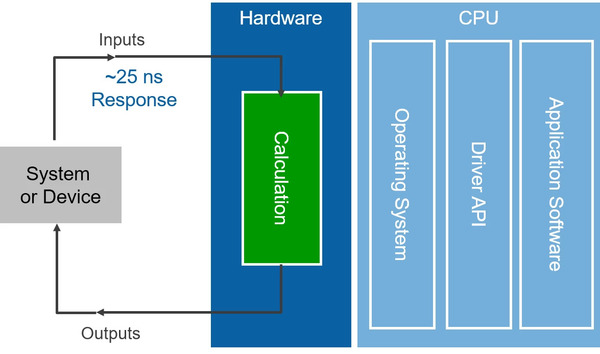Notifications
ALL BUSINESS
COMIDA
DIRECTORIES
ENTERTAINMENT
FINER THINGS
HEALTH
MARKETPLACE
MEMBER's ONLY
MONEY MATTER$
MOTIVATIONAL
NEWS & WEATHER
TECHNOLOGIA
TV NETWORKS
VIDEOS
VOTE USA 2026/2028
INVESTOR RELATIONS
DEV FOR 2025 / 2026
ALL BUSINESS
COMIDA
DIRECTORIES
ENTERTAINMENT
FINER THINGS
HEALTH
MARKETPLACE
MEMBER's ONLY
MONEY MATTER$
MOTIVATIONAL
NEWS & WEATHER
TECHNOLOGIA
TV NETWORKS
VIDEOS
VOTE USA 2026/2028
INVESTOR RELATIONS
DEV FOR 2025 / 2026
Posted by - Discrete Circuits -
on - June 17, 2024 -
Filed in - Technology -
what is fpga fpga applications how do fpgas work applications of fpga fpga uses what are fpgas used for what is fpga and how it works -
764 Views - 0 Comments - 0 Likes - 0 Reviews

Field Programmable Gate Arrays, or FPGAs, have brought significant advances in the electronics and computing industries due to their flexibility and efficiency. These powerful integrated circuits have many advantages over traditional microprocessors and application-specific integrated circuits (ASICs). Let's dive into what FPGAs are, how they work, and their various applications and architectures.
An FPGA is a type of integrated circuit that can be programmed by the user after it is manufactured. That's why it's called "field-programmable". Essentially, an FPGA is a collection of configurable logic blocks (CLBs) connected by programmable interconnects. This setup allows for high levels of parallel processing, making FPGAs ideal for handling complex calculations and tasks.
The main component of an FPGA is the CLB, which can be programmed to perform various logic functions. Here is a simple explanation of how an FPGA works:
The design of an FPGA includes several key components:
Field programmable gate arrays (FPGAs) are special computer chips that can be programmed to perform many different functions. They are used in many industries because they are very flexible and powerful. Let's look at some ways to use FPGAs in different fields.
FPGAs are very important in telecommunications, including things like the Internet and phone networks. They help manage and process large amounts of data quickly. FPGAs are found in network devices such as switches and routers. Because they can be easily reprogrammed, FPGAs can be updated to support new technologies and standards, keeping telecommunications systems up to date.
In aerospace and defense, FPGAs are used for tasks that need to be performed in real-time, such as in radar systems, airplane controls, and military communications. They are reliable and can handle large amounts of data simultaneously, making them suitable for these high-stakes applications.
In the medical world, FPGAs help improve the quality of images from machines like MRI and CT scanners. They can quickly process large amounts of data, which helps create clear and detailed images. This is important for doctors to accurately diagnose and treat patients.
The automotive industry uses FPGAs in advanced driver-assistance systems (ADAS) and self-driving cars. These chips process information from sensors like cameras and radar in real-time, helping the car make quick decisions and stay safe on the road.
In factories and industrial settings, FPGAs control robots and machinery. They can handle complex tasks and process data quickly, which helps machines run smoothly and efficiently. This reduces downtime and increases productivity. Moreover, HMI (Human Machine Interface) is a special part of robotics and machinery. Because HMI is used in automated machinery as well as production lines. HMIs can be found in simple touch screens, advanced touchscreens, multi-touch screens, etc.
FPGAs are powerful and flexible chips used in many different industries. They help improve telecommunications, aerospace, medical imaging, automotive technology, and industrial automation. As technology advances, FPGAs will become more important and find new uses in various fields.
